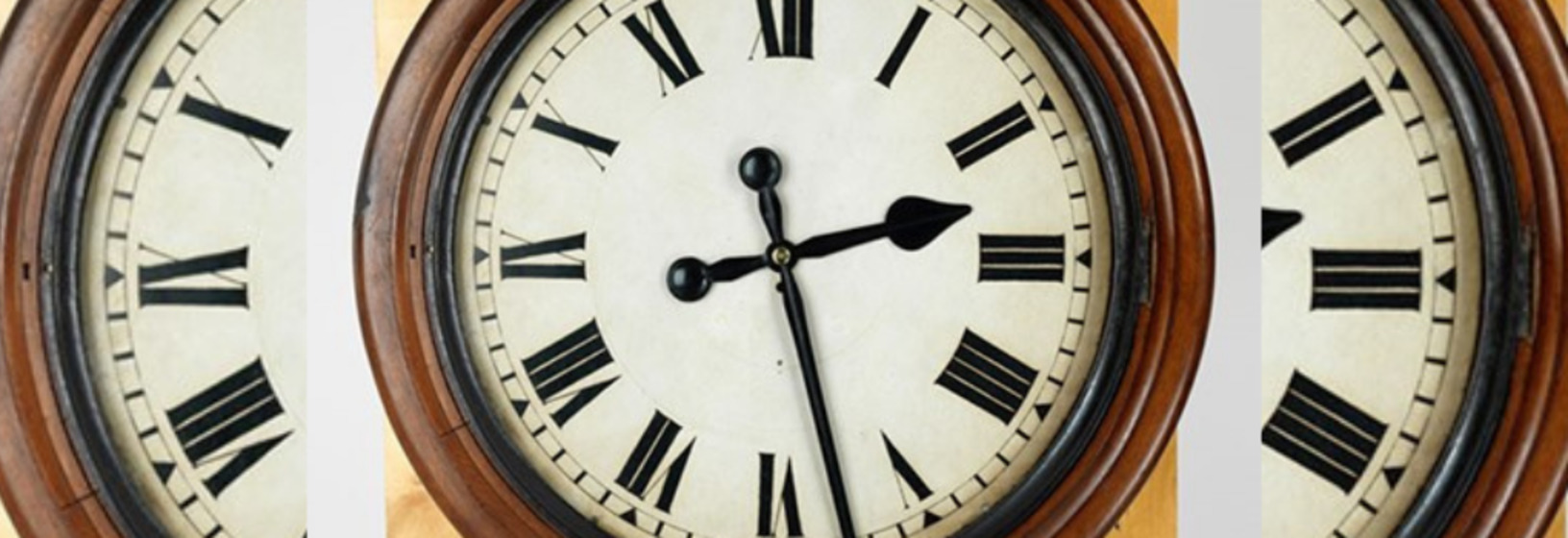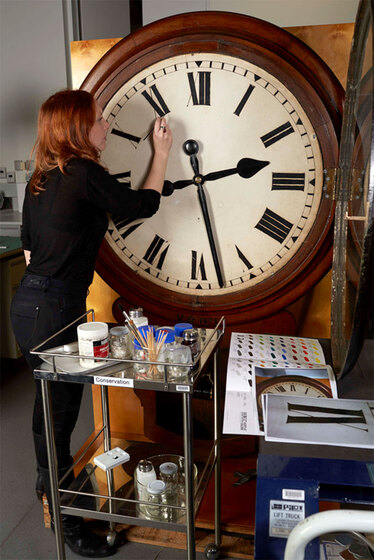From the vantage point of the twenty-first century it is easy to forget how recent the phenomenon of accurate public time is, yet prior to the clock’s installation at Spencer Street there was no system that allowed precision timekeeping across the state, and, with the advent of the railways as a fast and economical means of transport, this became increasingly important to the rapidly expanding colony.
As the Museum’s Head of Humanities, Dr Richard Gillespie, explains:
“Accurate time was essential for the railways, as timetables and the safe running of trains depended on the entire railway network operating on uniform time. Melbourne Observatory established the correct local time by observations of known stars with the observatory’s transit telescope and introduced a system of providing public time signals in 1871. The time signals were carried by telegraph line to Flinders Street Station, Spencer Street Station, Customs House, Parliament, and watchmaker Thomas Gaunt’s premises at Royal Arcade and Collins Street. This system of public time ensured that the major city clocks provided accurate Melbourne time, and allowed Melbournians to set their watches and clocks correctly. The electrical signal was used to control the swing of the clock’s pendulum, ensuring the maintenance of ‘observatory time.’”
Elaborate regulations were put in place to ensure that the correct time was transferred by telegraph signal at 10am each morning from the Main Line Starter Clock to every suburban and country station. The second most important clock in the system after the Master Clock, careful checks were made of its accuracy every day, and, as Dr Gillespie notes “it was never found to be more than 5 or 6 seconds out in a week.”
In this way the clock can be seen to manifest the imperial push of Victorian England, sending out along the line a new world order, tying the land and its newest inhabitants to a system of reference that was unheard of less than half a century before.
Train guards were required to check their watches against the nearest station clock soon after 10am, and to convey this information to smaller stations that were not connected by telegraph. By the early 1900s examiners maintained some 1300 clocks, and as many watches for guards and engine drivers.
Despite being consulted hundreds and even thousands of times a day we rarely consider the toll that the passage of time takes upon a station’s clock.
After many years of overseeing operations from the city’s regional hub, the Main Line Starter Clock required extensive conservation treatment for its move to the Children’s Gallery. Remedial action aimed at reversing old and poorly executed repairs, as well as approaches necessary for reinstating the clock’s appearance including cleaning, infilling and in-painting, were undertaken.
The clock had many areas of paint loss across the dial face, including to the roman numerals, which was visually distracting and hindered communication. Attention was focused on treating these areas with materials that were reversible and compatible with the substrate. Surface cleaning, focused on the removal of accumulated dust and foreign accretions, was also applied, but was carefully balanced in order to improve its appearance for display while preserving its original materials and significance.




